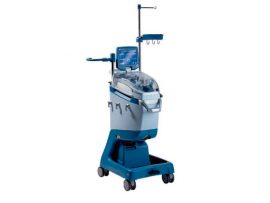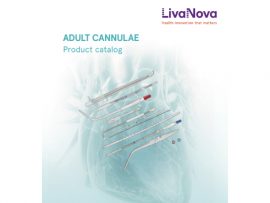Abstract Cardiac surgery in Jehovah’s Witnesses (JW) patients who refuse blood transfusion is challenging requiring dedicated strategies. We aimed to analyze non-selected JW patients undergoing cardiac surgery and to compare..
Read MoreAbstract Background Coagulopathy following cardiac surgery is associated with considerable blood product transfusion and high morbidity and mortality. The treatment of coagulopathy following cardiac surgery is challenging, with the replacement of..
Read MoreAbstract Patient Blood Management (PBM) is a patient-centered, systemic and evidence-based approach. Its target is to manage and to preserve the patient’s own blood. The aim of PBM is to..
Read MoreAbstract Background: Transfusion rates in cardiac surgery are high. Aim: To determine if intraoperative autologous blood removal without volume replacement is associated with fewer homologous blood transfusions without increasing acute kidney injury...
Read MoreAbstract Background: This improvement report presents a hospital blood-management programme, a hospital-specific model that differs from patient blood managment and was aimed at improving operational standards of transfusion. We identified..
Read MoreAbstract Objectives The objectives of this study were to evaluate the incidence and to identify risk factors for acute kidney injury (AKI) in neonates undergoing cardiopulmonary bypass (CPB) with a..
Read MoreAbstract Changes in hemodynamics and coagulation hemostasis during the use of protamine sulfate to neutralize heparin in a ratio of 0.5:1 in coronary artery bypass graft surgery have been studied...
Read MoreAbstract Background: Modified ultrafiltration has been touted as superior to conventional ultrafiltration for attenuating the consequences of hemodilution after cardiac surgery with cardiopulmonary bypass in children. We conducted a prospective randomized..
Read MoreAbstract Objectives The study objectives were to describe the incidence, risk factors, and outcomes of acute kidney injury after cardiopulmonary bypass in Jamaica. Method We performed a review of the..
Read MoreAbstract Background Minimally invasive extracorporeal circulation (MiECC) is employed as a strategy to attenuate the physiologic disturbance caused by cardiopulmonary bypass. The aim of this study was to compare the..
Read MoreAbstract Background: Post-cardiotomy vasoplegia syndrome (VS) is often linked to an exaggerated inflammatory response to cardiopulmonary bypass (CPB). At the same time, the prognostic role of platelet-leucocyte indices (PLIs) and leucocyte..
Read MoreAbstract OBJECTIVES Sickle-cell disease (SCD) patients are considered to be at high risk from open-heart surgery. This study assessed the role of a simple sickling-prevention protocol. METHODS Perioperative non-specific and..
Read MoreAbstract Objective Mechanisms and consequences of late-onset after cardiac surgery remain unclear. The aim of this study was to identify risk factors and outcomes of late , defined as a lactate value..
Read MoreAbstract The Acute Respiratory Distress Syndrome (ARDS) is common in patients on the Intensive Care Unit and associated with significant mortality rates. In situations of severe respiratory insufficiency and failure..
Read MoreAbstract Background Minimally invasive extracorporeal circulation (MiECC) is employed as a strategy to attenuate the physiologic disturbance caused by cardiopulmonary bypass. The aim of this study was to compare the..
Read MoreAbstract Background Hyperbilirubinemia following cardiac surgery is a common phenomenon and is of emerging interest in prognostic factor research. This systematic review and meta-analysis evaluated the association between post-operative hyperbilirubinemia..
Read MoreAbstract Preoperative anemia is common in patients presenting for cardiac surgery, with a prevalence of approximately 1 in 4, and has been associated with worse outcomes including increased risk of..
Read MoreCritical Preoperative Hemoglobin Value to Predict Anemia-Related Complications After Cardiac Surgery
Abstract Objectives Preoperative anemia is frequent in patients undergoing cardiac surgery and is associated with increased postoperative complications. Design A retrospective observational cohort study. Setting A tertiary-care medical center from..
Read MoreAbstract Background Sex differences present in the blood management of patients after coronary artery bypass grafts (CABG) surgeries. Tranexamic acid (TXA) performed well in maintaining hemostasis during and after surgeries...
Read MoreOutcome of type and screen versus crossmatch in cardiovascular surgery patients: A comparative study
Abstract BACKGROUND: The need for an anti-human globulin (AHG) cross-match (XM) when the antibody screen (ABS) is negative is debatable and a matter of policy. AIM: (1) To compare the outcomes of..
Read MoreAbstract OBJECTIVES Colloid oncotic pressure (COP) is an important factor in cardiac surgery, owing to its role in haemodilution. The effect of cardiopulmonary bypass prime fluids on the COP..
Read MoreAbstract Purpose Optimal heparin titration during cardiopulmonary bypass (CPB) may reduce coagulation system activation and preserve hemostatic function post-CPB. Our objective was to assess if the Heparin Management System (HMS)..
Read MoreAbstract Background: Antithrombotic drugs increase the risk of bleeding, especially in patients who need urgent surgery without an adequate wash-out period. This review aims to evaluate perioperative bleeding complications in..
Read MoreAbstract Background Coagulopathy in cardiac surgery is frequently associated with acquired hypofibrinogenaemia, which can be treated with either purified fibrinogen concentrate (FC) or cryoprecipitate. Because the latter is not purified..
Read MoreAbstract Traditionally, cardiac surgery has been practiced primarily through a median sternotomy; however, as instrumentation and experience continue to advance at exponential rates, the field of minimally invasive cardiac surgery..
Read MoreAbstract Background: Intraoperative cell salvage is an established method to reduce the requirement for and the volume of allogenic blood transfusion but adds to the financial cost of performing surgery...
Read MoreAbstract Surgical decannulation for venoarterial extracorporeal membrane oxygenation (VA-ECMO) is recommended as a standard weaning strategy considering large-sized cannulas (14-22 French) are inserted in VA-ECMO. However, we should be aware..
Read MoreAbstract Objective The study aims were to evaluate current blood transfusion practice in cardiac surgical patients and to explore associations between preoperative anemia, body mass index (BMI), red blood cell..
Read MoreAbstract Severe congenital Factor XI (FXI) deficiency (<20% normal activity) can be associated with significant bleeding disorders, and there has been great concern for severe bleeding following cardiac surgery requiring..
Read MoreAbstract Obstetric hemorrhage is the leading cause of maternal mortality globally, especially in China. The key to a successful rescue is immediate and rapid blood transfusion. Autotransfusion has become an..
Read More
















